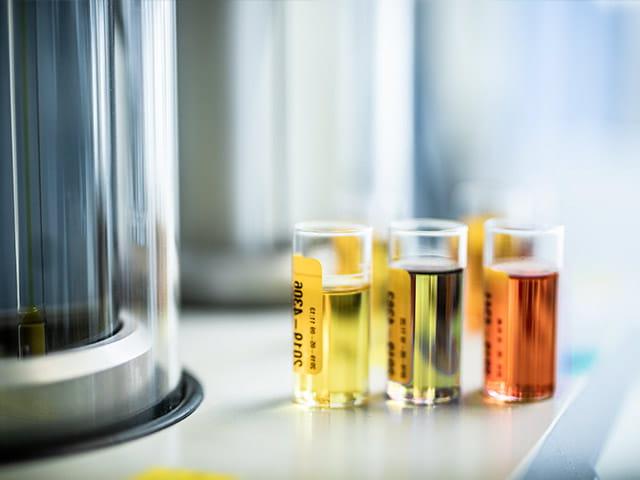In-service monitoring of lubricating oils is a powerful tool in the planned maintenance
Oil analyses offers an insight in the quality of the lubricant and the lubricity properties, providing a diagnosis of the machinery condition by early detection of abnormal wear and intrusion of contaminants in the system. For advanced lubricated systems, regular monitoring of in-service oils is crucial to ensure operational integrity and to reduce unplanned downtime. Almost all wear of mechanical systems leading to system failures can be attributed to incorrect or insufficient lubrication.
Benefits of regular condition monitoring
- Get early warnings of wear
- Control contaminant levels
- Detect lubricant degradation
Turbine oils, engine oils, transmissions and hydraulics
Condition monitoring by regular tests of in-service oils are made to give diagnostics of lubricant quality degradation, signs of abnormal wear and contaminant levels. Recurring tests are necessary to establish trends, and the test interval is set depending on production uptime requirements, risks in the operating environment and other maintenance routines. A common recommendation is that tests are made at least 2-4 times per year.
The results will be compared to reference values, system limits and/or recommendations to international standards such as ASTM D6224 or ASTM D4378 for in-service monitoring of gas and steam turbine oils.
Our oil analysis services cover:
- Hydraulic systems
- Gear boxes and transmissions
- Gas turbine engines (aviation, marine)
- Circulation systems (power generating turbines, industrial processes)
- Combustion engines
Element offers extensive capabilities and expertise in lubricant testing which gives independent test results from an accredited laboratory. When a test result indicates that a parameter is off spec, our Experts can help you investigate further. This could be signs of excessive wear, particles in the oil or clogged flters.
Ready to make an inquiry or request a quote?
Our deliverable is certainty - high quality data, test reports and certifications that you can rely on when making decisions about your materials and components. Engage with an expert today.
